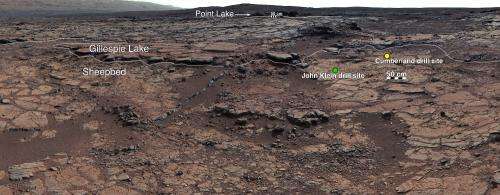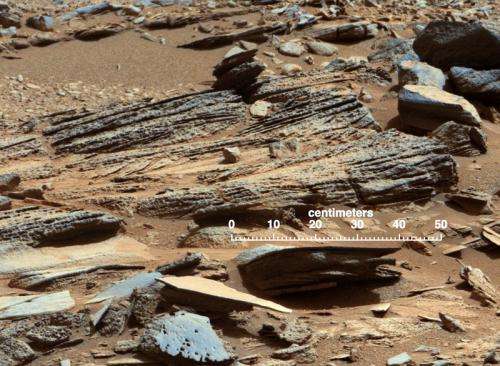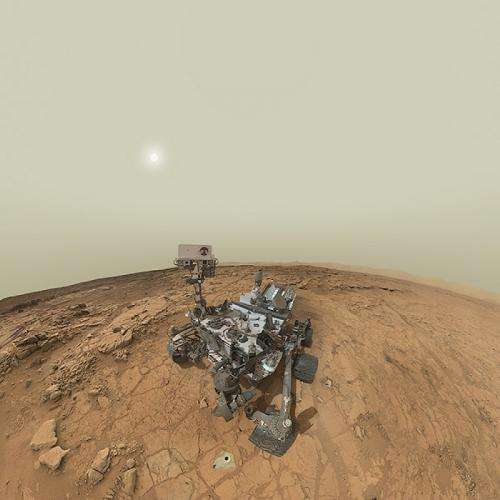ChemCam sheds new light on Yellowknife Bay

New results from the Chemistry & Camera (ChemCam) instrument on NASA's Curiosity rover provide further details about the ancient environment of Yellowknife Bay on Mars. Using data from ChemCam, as well as images from Mastcam and the ChemCam/Remote Micro imager, scientists have identified materials that were likely formed by precipitation from fluids.
Previous studies indicate that the underlying landscape of the site was formed from sedimentary materials that were washed into the region by liquid water and deposited. Over time, these sediments went through a process of 'cementation,' leaving the ground rocky and hard.
Later, after these sedimentary deposits had been cemented and buried, the Yellowknife Bay region underwent a new episode involving fluids, this time by percolation (the circulation of fluids within the ground).
"After the deposition of the sedimentary material by a fluvio-lacustrine system, an episode of fluid circulation occurred within this region," explains Marion Nachon of the Université de Nantes in France, and lead author on the study. " Our work provides information on this fluid circulation that occurred as groundwater, through the already cemented and buried sedimentary material."
Today, the cemented ground of Yellowknife is inundated with veins of lighter materials that contain calcium sulfate. Nachon and co-authors investigated where this light material could have come from. Their results indicate that processes related to groundwater caused the formation of the veins, as opposed to water that washed over the surface.

"This groundwater could have provided enough hydraulic pressure to create cracks through which the fluids have circulated, depositing the light-toned material that we see today, which contains hydrated calcium sulfate," said Nachon.
Ultimately, the landscape of Yellowknife Bay resulted from multiple episodes of material deposition, and this shows that the activity of liquid water was persistent over time. Composition of the materials also suggests that the water was relatively nonacidic.

"This process of percolation within cracks was persistent enough to precipitate multiple, fine veins of light-toned aspect," said Nachon. "They have been extensively analyzed by the ChemCam instrument, providing a composition of calcium sulfate: a specific mineral that requires fluids that are relatively mild."
The findings are encouraging for astrobiologists who are trying to identify locations on ancient Mars that could have supported habitable environments for life as we know it. The study was published in the Journal of Geophysical Research.
More information: "Calcium sulfate veins characterized by ChemCam/Curiosity at Gale crater, Mars."Journal of Geophysical Research: Planets. Volume 119, Issue 9, pages 1991–2016, September 2014. DOI: 10.1002/2013JE004588
Journal information: Journal of Geophysical Research
Source: Astrobio.net
This story is republished courtesy of NASA's Astrobiology Magazine. Explore the Earth and beyond at www.astrobio.net .





















